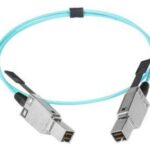 Molex has released a new report on miniaturization in product design that highlights the cross-disciplinary engineering design and manufacturing expertise required to integrate an onslaught of increasingly sophisticated features and functionality into constantly shrinking device footprints. The report, “Mastering Miniaturization, Expert Perspectives,” offers insights on how to navigate top trade-offs when meeting the cost and space requirements of densely packaged electronics amid the increasing demand for lighter, smaller products.
Molex has released a new report on miniaturization in product design that highlights the cross-disciplinary engineering design and manufacturing expertise required to integrate an onslaught of increasingly sophisticated features and functionality into constantly shrinking device footprints. The report, “Mastering Miniaturization, Expert Perspectives,” offers insights on how to navigate top trade-offs when meeting the cost and space requirements of densely packaged electronics amid the increasing demand for lighter, smaller products.
As miniaturization continues to permeate every industry and application category, product designers must balance competing factors, including Power and thermal management; Signal integrity and integration; Component and system integration; Mechanical stress and manufacturability; Precision, volume manufacturing and costs;
The report addresses miniaturization trends in consumer devices and medical wearables, as well as demand for smaller, lighter electronics and connectors in automotive, data center and industrial applications. Observations from experts across different sectors also shed light on how miniaturization is impacting factories, data centers, automobiles, medical wearables, smartphones, the evolution of 5G, and more.
Quad-Row Board-to-Board Connectors. The world’s smallest board-to-board connectors have staggered-circuit layout for 30% space savings to support smartphones, smartwatches, wearables, game consoles and Augmented Reality/Virtual Reality (AR/VR) devices.
Next-Generation Vehicle Architectures. Molex is driving development of zonal architectures, which replace traditional wiring harnesses with zonal gateways that group vehicle functions by location using fewer, smaller, more powerful and ruggedized connectors.
Flex-to-Board RF mmWave 5G25 Connectors. Micro-connectors combine compact size and superior signal integrity to deliver step-changes in performance to meet demanding 5G mmWave applications up to 25 GHz.
NearStack On-the-Substrate (OTS). Direct-to-chip solution places NearStack connectors directly on the chip substrate package, enabling high-density interconnects supporting 112 Gbps transmission over longer distances.






Leave a Reply
You must be logged in to post a comment.